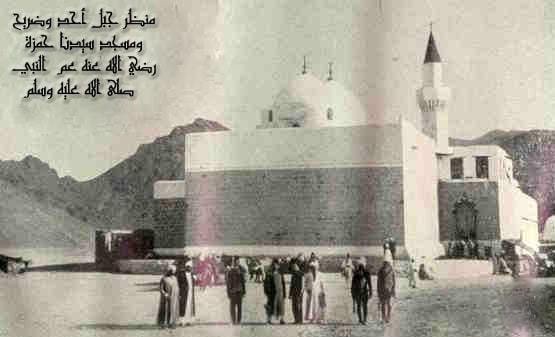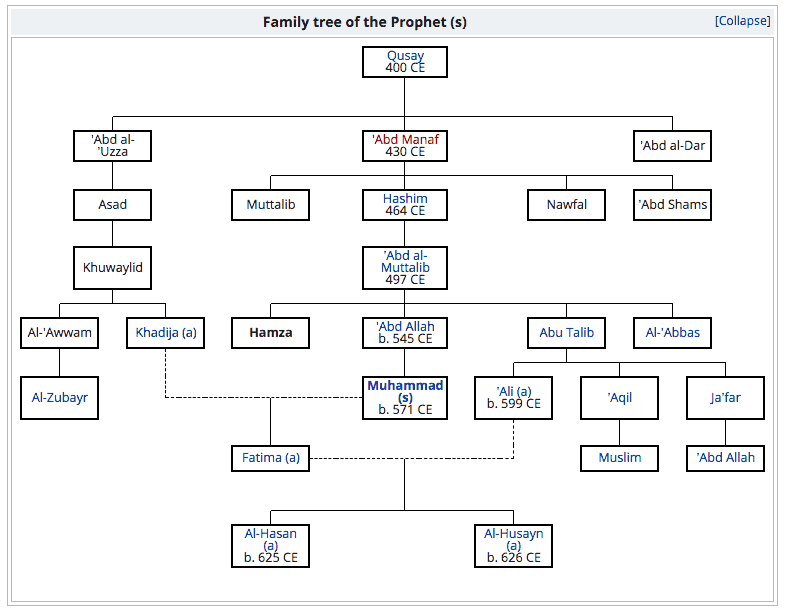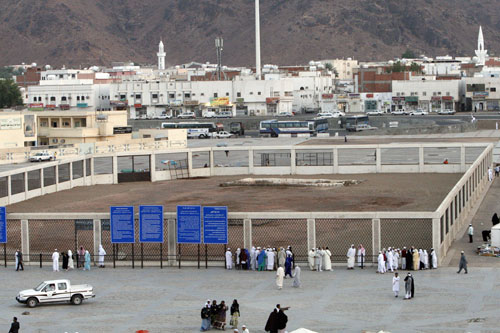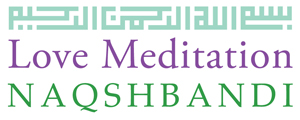URS Sayyidina Hamza RA, Uncle of Holy Prophet, Peace & Blessings be Upon Him

URS Sayyidina Hamza RA – 7-15th Shawwal, Uncle of Holy Prophet, Peace & Blessings be Upon Him.
Ḥamza b. ʿAbd al-Muṭṭalib (Arabic: حمزة بن عبدالمطّلب) (d. 3/625) titled as “Asad Allah”, “Asad Rasul Allah” and “Sayyid al-Shuhada” was the Prophet’s (Peace & Blessings be Upon Him) uncle and martyred in the Battle of Uhud. Even when Sayyidina Hamza RA had not still become a Muslim, he defended the Prophet (Peace & Blessings be Upon Him) against the harassments of idolaters. He was one of the noble people of Quraysh and therefore when he became Muslim, Quraysh would harass the Prophet (Peace & Blessings be Upon Him) less in frequency than before.
After becoming a Muslim, Sayyidina Hamza RA remained among the most important defenders of the Prophet (Peace & Blessings be Upon Him). He accompanied Muslims in the Shi’b Abi Talib. Hamza RA participated in a number of battles including the Battle of Badr and the Battle of Uhud in which he was martyred.
His name means “lion” or “sharp-sighted”. His Kunya was Abu ‘Umara and Abu Ya’la. His mother was Hala bt. Uhayb (Wuhayb) b. ‘Abd Manaf b. Zuhra.
Sayyidina Hamza RA was titled as “Asad Allah” and “Asad Rasul Allah”. According to a hadith, he was blessed after he was martyred and was titled as “Sayyid al-Shuhada'”.

Family Tree of Holy Prophet SWS
Birth
There are narrations saying that Thu’wayba, Abu Lahab’s female servant breastfed the Prophet (Peace & Blessings be Upon Him) and Hamza. And that Sayyidina Hamza RA was the Rida’i brother of the Prophet (Peace & Blessings be Upon Him) since he was given milk by the same woman as of the Prophet (Peace & Blessings be Upon Him). Sayyidina Hamza RA was at least two years older than the Prophet (Peace & Blessings be Upon Him).
Some have even considered this difference about four years which can be even more since some researchers have doubted that Thu’wayba fed the Prophet (Peace & Blessings be Upon Him). In any case, he must have been born two to four years before the Year of the Elephant (the year the Prophet (Peace & Blessings be Upon Him) was born).
Sayyidina Hamza RA Before Islam
Hamza participated in the battles of Fijar and the covenant of Hilf al-Fudul. He attended the ceremony for the Prophet’s (Peace & Blessings be Upon Him) proposal to Khadija (a) together with other uncles of the Prophet (Peace & Blessings be Upon Him). Even some sources have mentioned his name alone in that ceremony when Abu Talib recited the marriage formula even though he was a little older than the Prophet (Peace & Blessings be Upon Him).
In the year when Quraysh suffered a severe famine, the Prophet (Peace & Blessings be Upon Him) suggested that someone accepts the guardianship of Abu Talib’s family members since he had a large family; Hamza RA accepted the guardianship of Ja’far. Al-Tabari mentions Abbas b. ‘Abd al-Muttalib as the person who did so.
Hamza RA was a hunter. Before Islam, he was among the sons of ‘Abd al-Muttalib who became a chief of Quraysh and had such a position that other tribes signed contracts with him.
Sayyidina Hamza RA In Islam
The day when the Prophet (Peace & Blessings be Upon Him) invited his relatives to call them to Islam (Yawm al-Indhar), Sayyidina Hamza RA also was there. Even before becoming a Muslim, Hamza the same as Abu Talib defended the Prophet (Peace & Blessings be Upon Him) against harassments of idolaters. According to some historical narrations report that Sayyidina Hamza RA retaliated Abu Lahab’s insults to the Prophet (Peace & Blessings be Upon Him).
Becoming a Muslim
One day, Abu Jahl met the Prophet (Peace & Blessings be Upon Him) near the mount Safa and insulted him. The Prophet (Peace & Blessings be Upon Him) did not say anything to him. A woman slave was near there and saw what happened. When Sayyidina Hamza RA came back to Mecca from hunting, he used to circumambulate the Kaa’ba then he would go to Quraysh gatherings.
Quraysh loved Sayyidina Hamza RA because of his magnanimity. This time, when he came to Quraysh gathering, that woman slave went to Sayyidina Hamza RA and told him, “You were not here to see what Abu Jahl said to your nephew!” Sayyidina Hamza RA went to Abu Jahl and found him sitting among people in Masjid al-Haram. He struck his bow on Abu Jahl so hard that his head was badly broken. Then told him, “you dare insult Muhammad?!! You do not know I have accepted his religion?! I say whatever he says!”.
Banu Makhzum wanted to go help Abu Jahl, but he told them, “Leave Hamza, because I have badly insulted his nephew.” This happening was when Sayyidina Hamza RA declared his acceptance of Islam. Afterwards, Quraysh saw that the Prophet (Peace & Blessings be Upon Him) has a great support like Hamza RA who will protect him against their harms and thus they annoyed the Prophet (Peace & Blessings be Upon Him) less.
Based on a narration by Imam as-Sajjad (RA), what made Sayyidina Hamza RA accept Islam was his defence of the Prophet (Peace & Blessings be Upon Him) in a happening when idolaters threw a camel’s uterus on the head of the Prophet (Peace & Blessings be Upon Him). However, some researchers believe that Sayyidina Hamza RA acceptance of Islam has been based on awareness and knowledge.
He accepted Islam two or six years after the beginning of the Prophet’s (Peace & Blessings be Upon Him) mission before Abu Dhar RA became Muslim. Hamza’s acceptance of Islam was influential in the tendency of his relatives towards Islam.
There is little information about Sayyidina Hamza RA after accepting Islam before Hijra. When the Prophet (Peace & Blessings be Upon Him) revealed his invitation to Islam, Hamza RA also began inviting people to Islam. He stayed with the Prophet (Peace & Blessings be Upon Him) and did not immigrate to Ethiopia.
In the two or three years which idolaters besieged Banu Hashim and Banu Muttalib in the Shi’b Abi Talib, Sayyidina Hamza RA stayed with them. In the second treaty of ‘Aqaba, twelve years after the Prophet (Peace & Blessings be Upon Him) began his mission when some of the people of Medina made a treaty with the Prophet (Peace & Blessings be Upon Him), Sayyidina Hamza RA accompanied Sayyidina Ali (RA) in guarding that place against idolaters if they wanted to approach there.
Immigration to Medina
In the brotherhood covenant of Muslims in Mecca, Sayyidina Hamza RA became brother with Zayd b. Haritha RA and on the day of the Battle of Uhud, had mentioned him as his successor. Also in the brotherhood covenant of Medina, before the Battle of Badr, he became the brother of Kulthum b. Hadm RA.
The Prophet (Peace & Blessings be Upon Him) tied the first flag of war for Sayyidina Hamza RA in the month of Ramadan, 1/622 to lead the Sariyya against Quraysh’s caravan which was returning to Mecca from Levant.
Sayyidina Hamza RA accompanied with 30 people from among the Immigrants went to ‘Ays area near the sea and there encountered 300 pagan horsemen from Mecca led by Abu Jahl. Due to mediation of Majdi b. ‘Amr Juhani who was at peace with both groups, no war took place and both armies came back to their people. Sayyidina Hamza RA also was the standard-bearer in the battles of Abwa’ or Waddan, Dhu al-‘Ushayra and Bani Qaynuqa’.
In the Battle of Badr, Sayyidina Hamza RA was in the closest part of the Islam’s army to idolaters. The Prophet (Peace & Blessings be Upon Him) sent him, Sayyidina Ali (RA) and ‘Ubayda b. Harith b. ‘Abd al-Muttalib RA to fight with some of the chiefs of idolaters. According to different reports, ‘Utba b. Rabi’a or Shayba were killed in direct combat with Sayyidina Hamza RA.
In the occasion of Sadd al-Abwab, Sayyidina Hamza RA has been mentioned. Apparently, Hamza was one of the people whose house had a door which opened in the mosque of the Prophet (Peace & Blessings be Upon Him). The prophet (Peace & Blessings be Upon Him) ordered that all the doors except the door of Sayyidina Ali’s RA house be closed and answered Hamza’s question about it saying that it has been an order by God.
On the verge of battle of Uhud in 3/624, Sayyidina Hamza RA was one of the people who requested that they fight out of Medina so earnestly that he said he would not eat anything until he fought with the enemy out of the city. He was in charge of the heart of the army. He fought with two swords and showed great courage and valour in that battle.
Martyrdom
The Battle of Uhud happened on Saturday, Shawwal 7, 3/March 23, 625 (or on Shawwal 15/March 31). In that battle, Hamza was martyred by Wahshi b. Harb, the Ethiopian slave of the daughter of Harith b. ‘Amir b. Nawfal or the slave of Jubayr b. Mut’im.
According to a report, Harith’s RA daughter promised Wahshi to free him if he killed Muhammad (Peace & Blessings be Upon Him), Sayyidina Hamza RA or Sayyidina Ali (RA) as a revenge for her father who was killed in the Battle of Badr. According to another report, Jubayr b. Mut’im promised Wahshi freedom if he could take revenge of his uncle Tughayma b. ‘Adi who was killed in the battle of Badr.
However, undoubtedly, the motives of Hind, daughter of ‘Utba, wife of Abu Sufyan was greater than that of Jubayr or the daughter of Harith to take revenge for her father, brother and uncle who were killed in the battle of Badr. According to some reports, Hind encouraged Wahshi to that with the promise of giving him money.
Mutilation of His Body
According to a report, Hind had a vow to eat the liver of Hamza. First, Wahshi promised to kill Sayyidina Ali (RA), but in the battlefield, he martyred Sayyidina Hamza RA and took his liver to Hind. Hind gave Wahshi her clothes and jewels and promised to give him ten Dinars in Mecca. Then, she came to the body of Sayyidina Hamza RA and mutilated his body and by those parts of his body she cut, later made earrings, bracelet and anklets for herself. It is said that Mu’awiya b. Mughira and Abu Sufyan also mutilated or injured the body of Hamza.
Due to the savagery of the things happened to the body of Hamza, some companions of the Prophet (s) swore that they would mutilate 30 or more of the people of Quraysh, but the verse 126 of Qur’an 16 was revealed and although it gave them the permission for doing the same but regarded patience a better act instead.
His Burial
Hamza was the first martyr of the Battle of Uhud that the Prophet (Peace & Blessings be Upon Him) performed Funeral Prayer upon and then other martyrs were brought in different times and were laid beside him and then the Prophet (Peace & Blessings be Upon Him) performed prayer upon them. Therefore, he (Peace & Blessings be Upon Him) did pray upon the martyrs individually or collectively about 70 times. Sayyidina Hamza RA was shrouded in a piece of cloth, his sister Safiyya RA had brought, since idolaters had stolen all his clothes.

Modern Grave Sayyidina Hamza RA
Mourning for Sayyidina Hamza RA
When the Prophet (Peace & Blessings be Upon Him) saw Hamza that way, he cried and when he (Peace & Blessings be Upon Him) heard the Helpers crying for their martyrs, he (Peace & Blessings be Upon Him) said, “But Hamza does not have anyone to mourn for him!” Sa’d b. Mu’adh heard this and took women to the house of the Prophet (Peace & Blessings be Upon Him) and they mourned for Sayyidina Hamza RA.
Since then, any woman from the Helpers who wanted to mourn for a deceased person, would first mourn for Hamza. It is said that Zaynab, daughter of Abu Salama RA wore black clothes of mourning for Hamza.
Grave of Sayyidina Hamza RA
It is said that Lady Fatima (RA) used to visit Sayyidina Hamza’s RA grave and had marked it with stones.
Due to their enmity for the family of the Prophet (Peace & Blessings be Upon Him), Umayyads badly treated the graves of Sayyidina Hamza RA and other martyrs of Uhud.
It is said that in the rule of Sayyidina Uthman RA, Abu Sufyan trampled on the grave of Sayyidina Hamza RA and addressed him saying, “what you draw sword on us for to defend is now the toy of our youths!” Mu’awiya RA, around 40 years after the event of Uhud, said the flowing of the water of a spring in that area, and ordered that the martyrs of Uhud (including Sayyidina Hamza RA) to be exhumed and their bodies be replaced. So it is possible, the graves of some martyrs of Uhud and also Sayyidina Hamza RA might have been moved.
The grave of Sayyidina Hamza RA used to have a tomb and a mosque beside it, but after Wahhabis and Saudis came to power in Saudi Arabia, they destroyed his tomb and the mosque beside it in 1344/1925 and built another mosque which is now known as the mosque of Uhud, Sayyidina Ali (RA) and Hamza in the west side of it. Grave of Sayyidina Hamza RA has been a common place of visit by Shi’a pilgrims especially Iranians from long ago.
The Position of Hamza
An example of the great influence of Hamza’s personality and his popularity was that after he was martyred, some of the companions of the Prophet (Peace & Blessings be Upon Him) named their sons after him. The martyrdom of Hamza and Ja’far b. Abi Talib has been considered the cause of diminishing the power of Banu Hashim against Quraysh and ‘Ali b. Abi Talib’s (RA) loss of the caliphate after the Prophet (Peace & Blessings be Upon Him).
His Virtues in Hadiths
In their debates against their opponents, Sayyidina Ali (RA) and other Imams (RA) mentioned their relation with Sayyidina Hamza RA and Ja’far as-Siddiq RA as an honour.
There are many hadith about the virtues of Hamza. The Prophet (Peace & Blessings be Upon Him) called Sayyidina Hamza RA, Sayyidina Ja’far b. Abi Talib RA and Sayyidina Ali (RA) best of people and among his seven best relatives among Banu Hashim. He (Peace & Blessings be Upon Him) also called them best of the martyrs. He (Peace & Blessings be Upon Him) used to say that Sayyidina Hamza RA did justice to kinship and had many good deeds.
Mentioning the names of Sayyidina Hamza’s RA related properties such as his horse Ward, and his sword Liyah in narrations shows his important position which lasted many centuries after him.
Sayyidina Hamza RA’s Children
Sayyidina Hamza RA’s children were three sons with the names of ‘Amara, Ya’la and ‘Amir. ‘Amara (eldest son of Hamza) was present in conquering Iraq. Ya’la had five sons. Although, it is mentioned in sources that Hamza’s progeny did not continue but in 10th/16th century, some people were considered his descendants.
Bir hurmati Habib bir hurmati Anzalta Surat al-Fatiha for Sayyidina Hamza RA and all of the Martyrs RA of Battle of Uhud.

